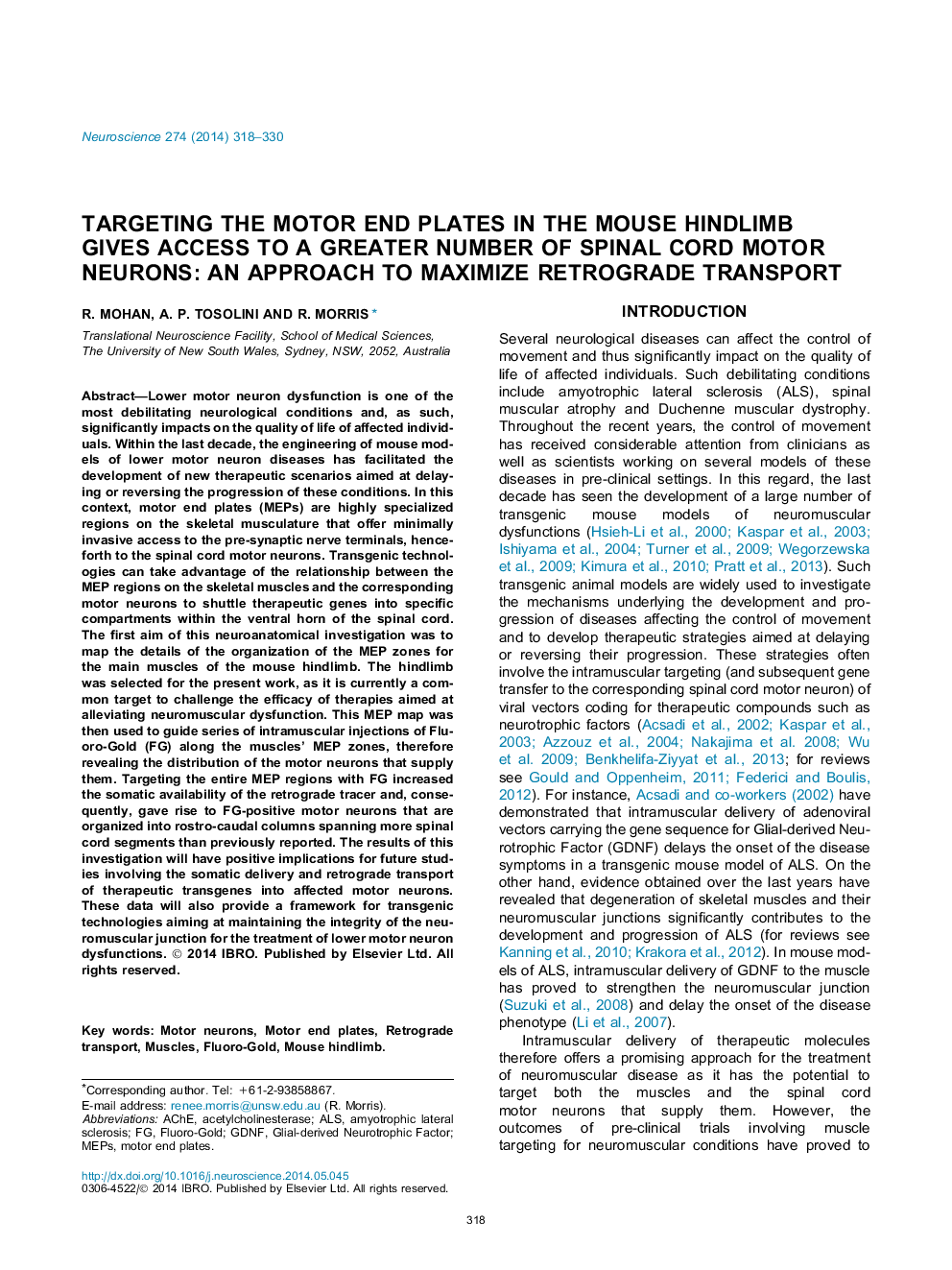| کد مقاله | کد نشریه | سال انتشار | مقاله انگلیسی | نسخه تمام متن |
|---|---|---|---|---|
| 4337623 | 1614802 | 2014 | 13 صفحه PDF | دانلود رایگان |
• MEP regions exist as discrete and continuous bands that span across hindlimb muscles.
• Targeting the entire MEP region is crucial for maximum somatic uptake within corresponding innervating motor neurons.
• A suggestive topography exists between MEP regions and the rostro-caudally extending motor column innervating the muscle.
• Muscles with double MEPs are suggested to be innervated by motor neurons sending collaterals to both end plate regions.
• Positive implications for studies involving somatic delivery and retrograde transport of therapeutic genes to motor neurons.
Lower motor neuron dysfunction is one of the most debilitating neurological conditions and, as such, significantly impacts on the quality of life of affected individuals. Within the last decade, the engineering of mouse models of lower motor neuron diseases has facilitated the development of new therapeutic scenarios aimed at delaying or reversing the progression of these conditions. In this context, motor end plates (MEPs) are highly specialized regions on the skeletal musculature that offer minimally invasive access to the pre-synaptic nerve terminals, henceforth to the spinal cord motor neurons. Transgenic technologies can take advantage of the relationship between the MEP regions on the skeletal muscles and the corresponding motor neurons to shuttle therapeutic genes into specific compartments within the ventral horn of the spinal cord. The first aim of this neuroanatomical investigation was to map the details of the organization of the MEP zones for the main muscles of the mouse hindlimb. The hindlimb was selected for the present work, as it is currently a common target to challenge the efficacy of therapies aimed at alleviating neuromuscular dysfunction. This MEP map was then used to guide series of intramuscular injections of Fluoro-Gold (FG) along the muscles’ MEP zones, therefore revealing the distribution of the motor neurons that supply them. Targeting the entire MEP regions with FG increased the somatic availability of the retrograde tracer and, consequently, gave rise to FG-positive motor neurons that are organized into rostro-caudal columns spanning more spinal cord segments than previously reported. The results of this investigation will have positive implications for future studies involving the somatic delivery and retrograde transport of therapeutic transgenes into affected motor neurons. These data will also provide a framework for transgenic technologies aiming at maintaining the integrity of the neuromuscular junction for the treatment of lower motor neuron dysfunctions.
Figure optionsDownload high-quality image (104 K)Download as PowerPoint slide
Journal: Neuroscience - Volume 274, 22 August 2014, Pages 318–330
